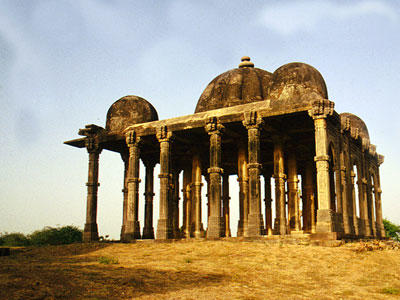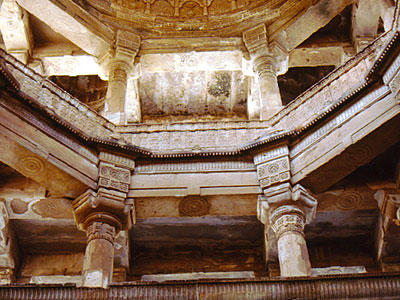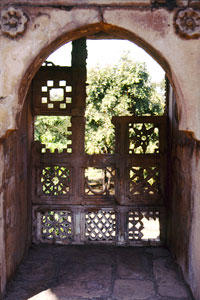Champaner-Pavagadh
In the fifteenth and sixteenth centuries, the city of Champaner was an important post along the trade route linking the states of Malwa and Gujarat in western India. Medieval Champaner grew and developed at the base of the towering Pavagadh Hill, an 800-meter-high peak that remains a Hindu pilgrimage site to this day. Much of the city was built by Sultan Mehmud Begda, who transformed Champaner into the powerful capital of Gujarat. Muslim, Hindu, and Jain regimes claimed the city at various times during its prime, and all three traditions are reflected in its varied architectural fabric. Champaner was laid out over six kilometers with districts devoted to civic, religious, and domestic life. Over the hundreds of years since its construction, this vast urban territory has become buried beneath dense forest cover. Archaeological activity in the last 50 years has rediscovered the city, which has already yielded 69 standing monuments in the section that has been excavated. At the end of the twentieth century, however, unplanned development and industry began to threaten what had been found of Champaner and all that had not yet been exposed.
2000 World Monuments Watch
Champaner-Pavagadh was included on the 2000 World Monuments Watch in response to concerns about new construction encroaching on the site, industrial pollution, and harmful blasting in nearby quarries. The local Baroda Heritage Trust (BHT) had been advocating for the preservation of Champaner as an active archaeological site since 1985. WMF hoped that Watch-listing would raise awareness for their efforts and help Champaner-Pavagadh achieve regional and national protection. BHT submitted a portfolio of potential projects to WMF, containing immediate and long-term strategies for the conservation of the city. Atak Fort was chosen as a pilot project. WMF secured funds for research leading to a comprehensive site management plan. A survey of the architectural fabric was carried out, in addition to several mapping studies. Archival research was conducted in order to faithfully restore and present the city’s historical features, including military installations and water gardens. In 2004, Champaner-Pavagadh Archaeological Park was designated a UNESCO World Heritage Site and now receives international attention.
The medieval city of Champaner sprawls across the five descending plateaus of Pavagadh Hill in western India, creating a stunning visual landscape of natural and man-made environments. A Hindu fortress built atop Pavagadh in the seventh century and the mount, sacred to the goddess Kalika, functions as a pilgrimage destination to this day. Constructed over the course of the fifteenth and sixteenth centuries, the city of Champaner provides critical insight into the layout and development of a medieval urban environment in south Asia. With Hindu, Muslim, and Jain architectural elements, Champaner represents a vibrant multicultural society. At the time of nomination to the Watch, 69 standing monuments had been excavated, but only 39 of them were protected by local heritage legislation. The Baroda Heritage Trust and WMF continued to advocated for the preservation of Champaner-Pavagadh until the site was added to the UNESCO World Heritage List in 2004.




